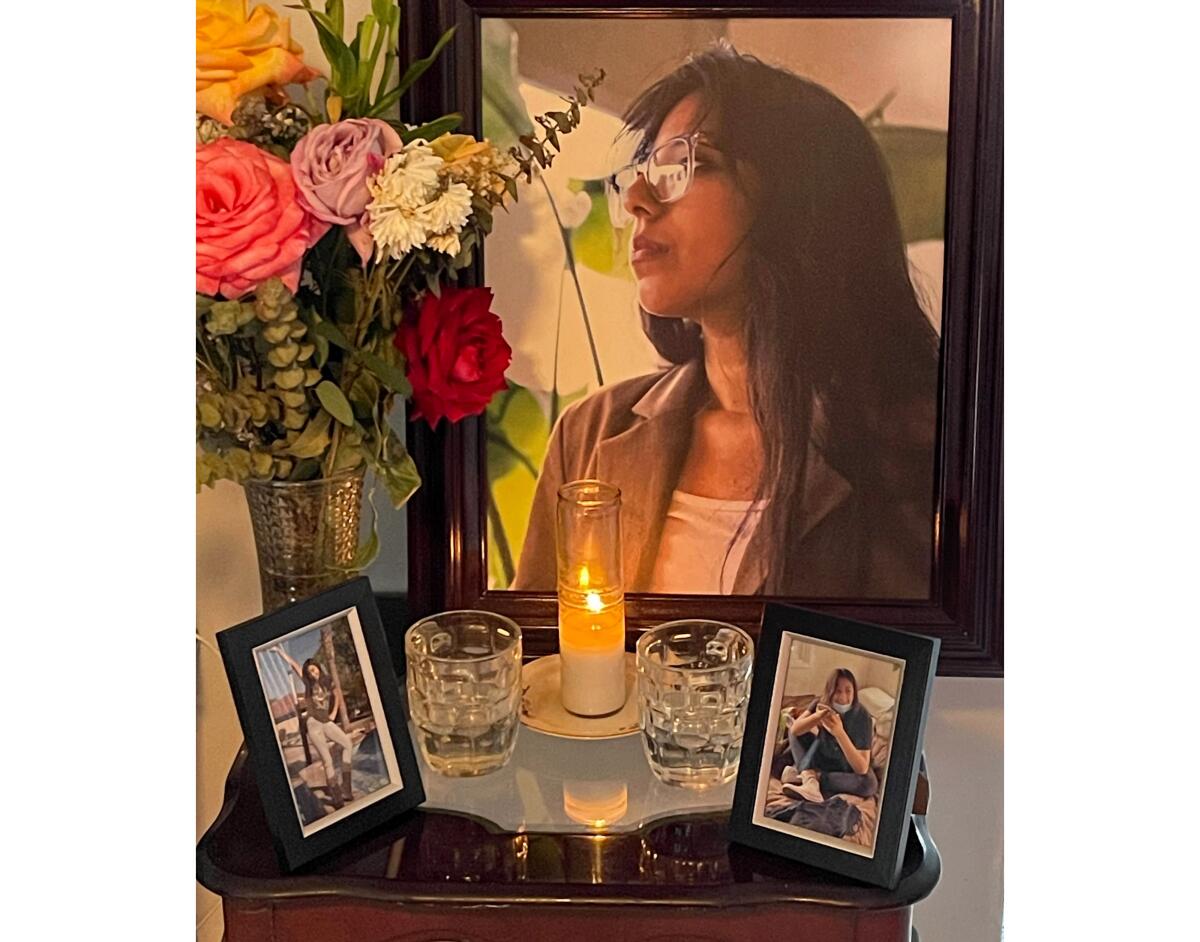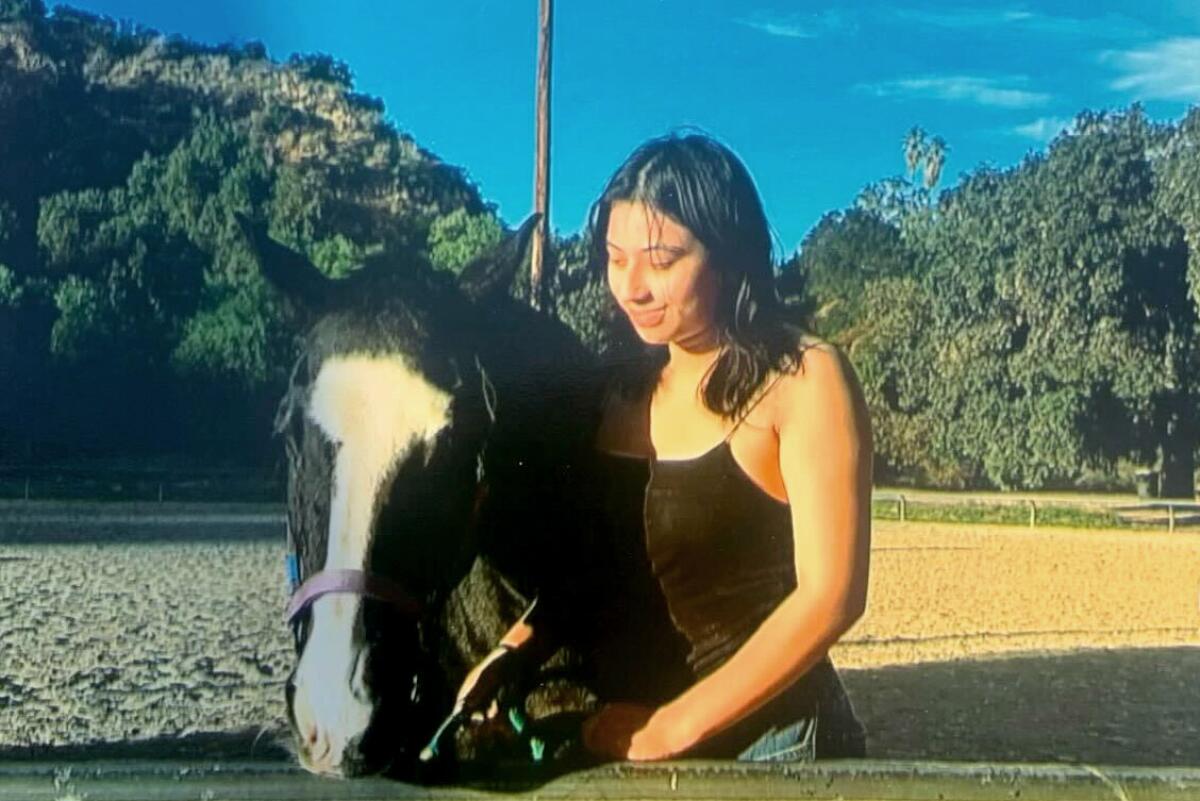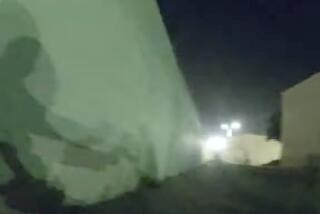Their daughter killed herself with a deputy’s gun. They’re still looking for answers

When he got home from work early on a Sunday afternoon in March, Alex Gutierrez called for his youngest daughter and smiled as she popped out of her room to greet him.
She was usually buoyant and effusive, but this time she really hammed it up, hugging and kissing the case of Propel Fitness Water he’d brought home from the store. That it was her favorite seemed only fitting for a girl always in motion.
The 67-year-old La Puente man laughed at his teen’s performance, then headed inside to take a nap.
In the past, 17-year-old Johanna Gonzalez had struggled with mental health problems, hearing voices and flying into uncontrollable fits and outbursts. But today seemed to be a good day.
Then, around 7 p.m. Gutierrez woke up to the sounds of angry voices. Johanna screamed at her mother, then flew out of the house. The sky was already dark, but the teen stormed to the nearest sheriff’s station about a mile away.

She banged on the door until a deputy strolled up, stretching his right arm across his body toward the handle — and leaving the gun on his right hip exposed as he answered.
Without hesitation, Johanna plucked the gun out of its holster, kicking off a struggle. A leaked video of the incident reviewed by The Times showed the deputy punching the girl twice, apparently in an ill-fated attempt to disarm her.
Less than 20 seconds later, Johanna shot herself in the head. She died on the floor of the Industry Sheriff’s Station.
“It’s just unbelievable,” Gutierrez told The Times in an interview. “How can a 17-year-old girl so easily disarm a sheriff’s deputy?”
More than a month later, that’s one of the many unresolved questions about what happened that night inside the sheriff’s station. Johanna’s parents have questions about the deputy’s training. The family’s lawyer wants to know the deputy’s name. And several people within the department have raised questions about why his weapon wasn’t better secured and what kind of holster he was using.
Department officials have said little publicly, but a few weeks after the girl’s death, they sent an email reminder to all deputies, instructing them to not use unapproved holsters or weapons. Though officials did not answer a variety of questions for this article — including the name of the deputy or whether he was wearing an approved holster — the department said in a statement to The Times that “several layers of review” are underway, including an internal administrative investigation.
“Our personnel that were involved were extremely distraught and the Department offered our Psychological Services to them,” the statement said. “Our thoughts are with the family during this difficult time.”
::
Almost from the beginning, Johanna had a tough life. She was born in 2006 in North Carolina, the youngest of three children in a family that moved often. Before she was big enough to walk, her mother was deported to El Salvador and her elderly father seemed on the verge of losing custody. So the children’s aunt and uncle — Miriam and Alex Gutierrez — took in all three kids.

The couple already had a son of their own living at their ranch-style house in a working-class part of La Puente, with a papaya tree out front and a rubber tree in the back. Miriam worked as a seamstress and Alex was a truck driver. And a few years after taking in the Gonzalez children, Alex and Miriam took in two other children from another family member.
“We always wanted a big family,” Miriam said.
For a time, they had it.
The Gutierrezes were the only parents Johanna had really known — and she called them mom and dad. From a young age, she was adventurous and always in motion — gardening, doing chores, asking to tag along with her parents for simple errands. She liked to skateboard and run and dreamed of becoming a paramedic.
But as Johanna moved into her teens, she started having trouble. She still did well in school, getting mostly A’s and Bs. And she was still her usual ebullient self at home. At night, though, she started slipping out the window to meet an older man.
Suicide prevention and crisis counseling resources
If you or someone you know is struggling with suicidal thoughts, seek help from a professional and call 9-8-8. The United States’ first nationwide three-digit mental health crisis hotline 988 will connect callers with trained mental health counselors. Text “HOME” to 741741 in the U.S. and Canada to reach the Crisis Text Line.
It’s unclear what Johanna thought the relationship was, but Alex is blunt when talking about it now: “He was sexually abusing her and getting her into drugs.”
But he and Miriam didn’t find out about it for years.
In the meantime, Johanna started having mood swings and what Miriam described as “episodes.” Sometimes, she told her family she heard voices — and occasionally they’d catch her in her room, talking to them. Eventually, a doctor told Alex and Miriam that their daughter might have schizophrenia and bipolar disorder, but that she was so young it was hard to be certain of a diagnosis.
Some of Johanna’s odd behavior started to make a little more sense about two years ago, after she confessed to a cousin about her nighttime departures. The day Alex learned of it, he installed cameras all around the house so Johanna — then 15 — couldn’t keep getting out at night.
But that didn’t put an end to the problems. According to Alex and Miriam, Johanna lashed out and made an allegation of sexual abuse against a man the Gutierrezes had let live in the den. Child welfare workers soon removed Johanna and her siblings. According to Miriam and Alex, the other children were allowed to return almost immediately. But Johanna went to live in a locked facility where she could get treatment.
She took medication and seemed more stable. The man who’d abused her was eventually arrested and sentenced to probation, her parents said. And while Johanna was living outside the home, Miriam visited her every chance she got. By early this year, Johanna was doing well enough to come home for an extended visit.
But on the afternoon of March 24, Johanna and her mother got into a fight — about when she’d be able to replace her broken phone. She shouted that she wanted to leave, that she wanted to hit a cop and go to jail.
Hoping to calm her, Miriam called Johanna’s brother Daniel, 19, and put the call on speakerphone. Johanna told him she’d rather die than go back to the facility.
Just before 7:30 p.m. she ran out the front door, her father said. He called 911 for help finding her. He said he warned the dispatcher that Johanna had a history of mental health problems and that she seemed to be having some kind of episode.
Meanwhile, her mother jumped in the car to follow her, driving slowly a little ways behind so as to not get too close and anger her further. It was a relief when she watched Johanna walk up to the sheriff’s station and start banging on the door.
Miriam parked outside and waited, thinking she’d give her daughter a few minutes to calm down before following her in.
By then, deputies responding to the 911 call were already at the family home talking to Alex. He told them what happened, said his daughter needed a mental health evaluation. The deputies listened. But when their radios crackled to life, they abruptly told Alex they needed to leave.
Back at the station, the fire department arrived, and Miriam heard the hum of a helicopter overhead.
Then a deputy walked to the car and asked her: “Is that your daughter inside?” Forty-five minutes passed before he told her that Johanna was dead.
Stunned, Miriam followed him inside and waited for her husband to arrive. The couple hoped for answers, but instead, they said, the deputies separated them for questioning. The deputies provided little information in return.
Six weeks later, they still haven’t.
One thing Johanna’s parents did get was a chance to see surveillance video from inside the sheriff’s station. But Alex and Miriam didn’t want to remember their daughter that way. So instead, the family’s attorney — Delaney Miller — watched it, along with Johanna’s older brother.
To Miller, the video was grueling to watch. Afterward, he had more questions. He still wanted to know who the deputy was, and how it was possible for a 17-year-old girl to grab his gun so quickly. But he also wondered why the deputy had seemingly let his guard down when he opened the door.
“She was banging at the door for 30 seconds, and they’d already received a call about someone fitting her description that was in distress,” Miller said. “And the way that this door was opened without any effort to protect the holster is disturbing. You expect police officers to be ready for anything and not to make a situation worse.”
Several sources within the department — who asked to remain anonymous because they were not authorized to speak on the record — raised some of those same concerns, pointing out that their training teaches them to stay on guard and protect their weapons.
“He should have opened the door with his nongun hand,” one deputy said. “We are trained to keep our gun side away from anyone we come in contact with.”
But to Daniel, those concerns were not what stuck with him the most after reviewing the video of the night his sister died.
“I could see how much pain she was in,” he said. “I just watched her face.”
::
A month and a half after Johanna’s death, her family still feels her presence. Her picture looms large over their living room. Sometimes, fleetingly, Daniel almost thinks he can hear her voice.
Just inside the entryway, the family created a shrine they planned to leave up for 40 days. It held pictures to remember her by, candles to help her soul find its way and water, in case her soul gets thirsty. Breaking with tradition, there was also a cup of Propel.
As Alex watched the liquid disappear a little more each day, he knew it was evaporation at work. But a part of him still hoped: Maybe it was her.
More to Read
Sign up for Essential California
The most important California stories and recommendations in your inbox every morning.
You may occasionally receive promotional content from the Los Angeles Times.











